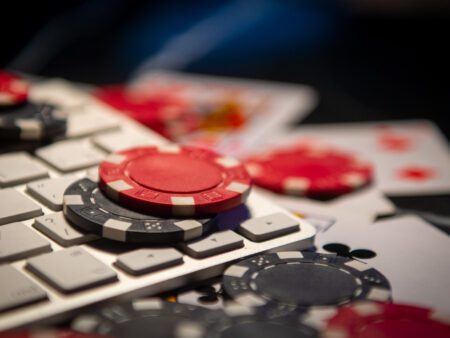Get ready to revisit the thrilling world of roulette strategies – exploring traditional, famed methods and understanding how modern tweaks can amplify your chances of success.
Roulette Revisited: Combining Traditional and Modern Strategies
Can you hear it? That mesmerizing whisper of the roulette wheel, as the ball dances capriciously between red and black, zero and double-zero? While I’ve been in that situation several times, one memory particularly stands out. It was a classic Vegas lounge, infused with an intoxicating mix of anticipation and cool elegance. Betting chips piled up like miniature towers of daring hope.
We’ve all heard the roulette stories, woven with threads of thrill, fortune, and occasionally, disaster. But here’s a shocker: Did you know that the mathematically expected return for any European roulette bet is exactly the same, regardless of the strategy employed? That’s right—regardless of whether you’re backing red or black, high or low, a single number, or a cluster—the house edge remains constant at 2.7%.
Astonishing isn’t it? Yet amidst this fact is where our journey begins. Because knowledge, as they say, is power. Today, our focus lies purely on boosting that power, revisiting good old roulette strategies, and sprinkling them with a dash of modern twists. We’ll take a look at these revered roulette betting systems. Can they really make a difference? Is that 2.7% edge absolute, or can it be diminished, even if fractionally?
Traditional Roulette Strategies: Backbone of Betting
Since the 18th century, excited minds have cooked up a smorgasbord of betting systems, promising to crack the roulette code. Let’s peek at a couple of these all-time favorites.
The Martingale Method, for instance, is an age-old plan conceived for even money betting. It’s as simple as pie: if you lose your bet, double the stakes on your next spin. Theoretically, this way, when you do win, you regain all previous losses, and snatch a little extra.
Then we have the Fibonacci system, a system bedecked with mathematical glamor. It’s inspired by the famous Fibonacci sequence, where each number is a sum of the two before it. Here, after a loss, you move one step forward in the sequence to calculate your next bet. After a win, hop two steps back.
These systems are fascinating, aren’t they? Steeped in history, echoing with tales of fortunes won and lost. But do they overcome that stern 2.7% edge? Or do we need a fresher approach, armed with the knowledge and technology of today? Let’s find out.
Modern Twists: A New Approach to Betting
The advent of online casinos and digital gambling has unlocked a trove of new possibilities, allowing us to rethink traditional roulette strategies from a fresh perspective. The key to this revolution? Data. Lots and lots of it.
Take, for instance, the burgeoning field of predictive betting. Using data-harvesting software, players analyze thousands of roulette sessions to observe patterns and anomalies. This arsenal of information could lead to strategic adjustments that traditional methods simply cannot offer.
Additionally, the rise of blockchain technology and cryptocurrency in the gambling sphere has introduced novel betting tactics, like ‘provably fair’ games where the roles of player and casino are more balanced. Choices, dear gamblers, have indeed never been this plentiful.
Parting Thoughts
Sure, there’s no foolproof strategy to consistently strike gold at the roulette table. That elusive 2.7% might never entirely evaporate. But by coupling well-honed traditional methods with new-age insights, you can expand your tactical arsenal, potentially tipping the game, ever so slightly, to your favor. So, ready to reconsider your roulette strategy and dance anew with the wheel of fortune?










